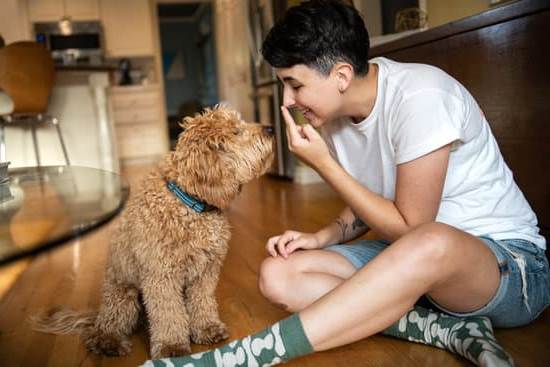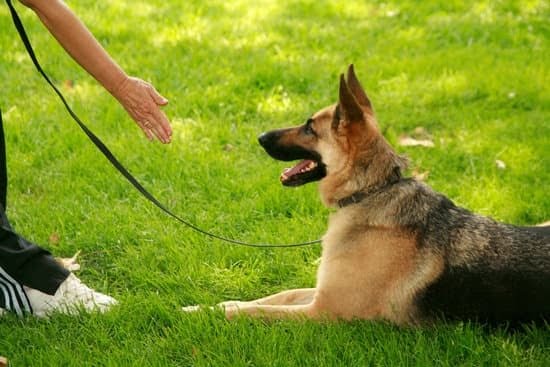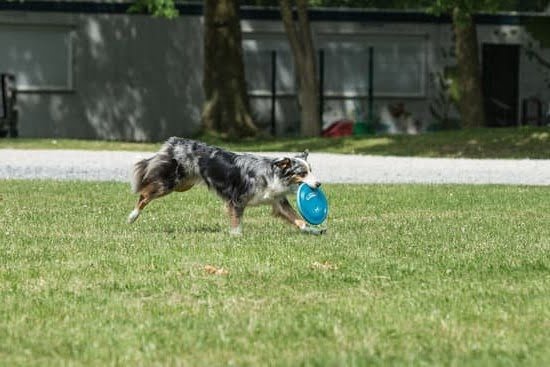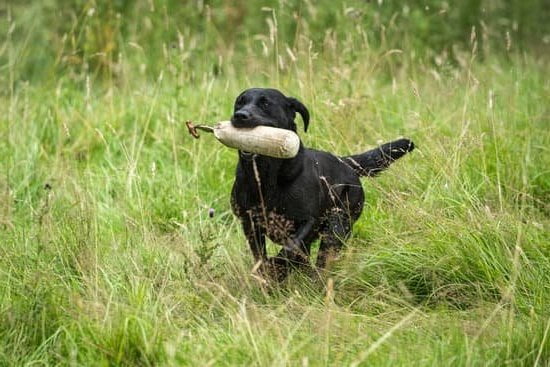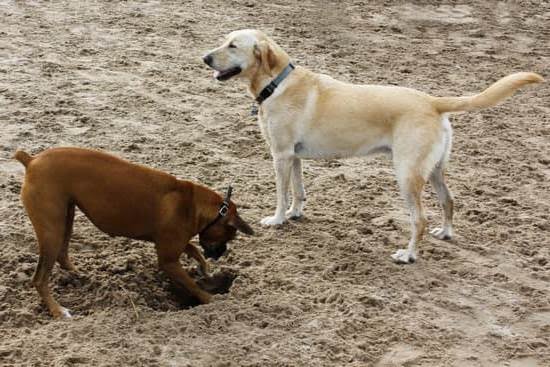Training your dog to return on command is a crucial aspect of any dog owner’s responsibility. Whether you’re at the park, hiking in the woods, or simply in your own backyard, having a reliable recall can ensure your pet’s safety and strengthen the bond between you and your furry companion. In this article, we will explore the importance of teaching your dog to return on command and provide valuable insights on how to achieve this essential skill.
Dogs are naturally curious and easily distracted creatures, which can sometimes lead to them disobeying recall commands. Understanding the psychology behind why dogs may not always return when called is key to successfully training them. By creating a consistent and engaging training routine, you can effectively communicate with your canine friend and encourage them to come back to you promptly every time.
Consistency is key when it comes to training your dog to return on command. By choosing the right reward system that motivates your pet, teaching the initial recall command in a controlled environment, and gradually increasing distractions to reinforce their response, you can set up a solid foundation for success.
Through patience, dedication, and positive reinforcement techniques, you can tackle common challenges in training a dog to return on command and celebrate each milestone as you build a strong bond with your beloved companion.
Understanding the Psychology Behind Why Dogs May Not Always Return When Called
Variable Reinforcement and Natural Instincts
One of the key reasons why dogs may not always return when called is rooted in the psychology of variable reinforcement. Dogs, like humans, respond to rewards and consequences. However, if a dog has been intermittently reinforced for returning in the past (sometimes receiving a treat or praise and sometimes not), they may not consistently come back when called. This inconsistency can be frustrating for pet owners but understanding this concept can help in retraining.
Moreover, dogs also have natural instincts that can sometimes override their training. For example, if a dog sees a squirrel running by or sniff something interesting during their playtime at the park, their instinctual drive might compel them to chase or explore rather than return to their owner. It’s essential to recognize these innate behaviors and work on effectively addressing them through training techniques.
Trust and Relationship Building
Another factor that contributes to a dog’s response to recall commands is the level of trust and bond between the pet parent and the dog. If a dog doesn’t have a strong sense of connection with their owner or if positive associations with returning are lacking, they may not feel motivated to come back consistently. Building trust through regular positive interactions, playtime, training sessions, and rewards can significantly impact how well a dog responds to recall commands.
Additionally, understanding your dog’s individual temperament, breed tendencies, and unique personality traits can provide valuable insights into why they may struggle with recall training. Some breeds have strong prey drives or independent streaks that might make them more challenging to train for reliable recalls. By taking into account these factors and tailoring your training approach accordingly, you can set up your dog for success in learning how to return on command effectively.
Setting Up a Training Routine
Dogs are naturally curious and may get easily distracted, making it important to train them to return on command. Setting up a consistent training routine is key to ensuring your dog learns this crucial skill effectively. Consistency in training helps establish clear expectations for your dog and reinforces the desired behavior of returning when called.
To start training your dog to return on command, it’s essential to create a structured schedule for training sessions. This consistency helps your dog understand that coming back to you when called is non-negotiable. Choose specific times each day for training, ensuring that distractions are minimal so your dog can focus on learning the recall command.
Another important aspect of setting up a training routine is keeping sessions short and positive. Dogs have short attention spans, so breaking up training into shorter sessions throughout the day can be more effective than long, tedious sessions. Positive reinforcement through treats, praise, or play also plays a crucial role in teaching your dog to return on command effectively.
| Key Points | Description |
|---|---|
| Consistent Schedule | Create a daily routine for training sessions. |
| Short Sessions | Break up training into shorter periods throughout the day. |
| Positive Reinforcement | Reward desired behavior with treats, praise, or play. |
Choosing the Right Reward System for Your Dog’s Return
When it comes to training a dog to return on command, choosing the right reward system is essential. Dogs are motivated by different incentives, so figuring out what works best for your furry friend is crucial in reinforcing the desired behavior. Here are some options to consider when selecting a reward system for your dog’s return:
- Treats: Many dogs respond positively to treats as a reward for obeying a command. Make sure to use small, tasty treats that your dog loves to maximize their motivation.
- Verbal praise: Some dogs are more motivated by verbal praise and affection from their owners. A simple “good boy” or pat on the head can go a long way in encouraging your dog to return on command.
- Playtime: For playful dogs, playtime with their favorite toy as a reward can be highly effective. Using a game of fetch or tug-of-war as a reward can make training sessions enjoyable for both you and your dog.
It’s important to experiment with different reward systems to see which one yields the best results for your specific dog. Some dogs may be more food-motivated, while others may respond better to play or attention. By understanding what drives your dog’s behavior, you can tailor your training approach accordingly.
In addition, timing is key when it comes to rewarding your dog for returning on command. The reward should be given immediately after the desired behavior (in this case, returning when called) to reinforce the connection between the action and the positive outcome. Consistency in rewarding good behavior will help solidify the recall command in your dog’s mind and encourage them to respond promptly every time they hear it.
Teaching the Initial Recall Command in a Controlled Environment
Choosing the Right Approach
When it comes to teaching your dog to return on command, it is essential to start in a controlled environment where there are minimal distractions. Begin by selecting a quiet and familiar space, such as your backyard or a quiet indoor area. This will help your dog stay focused on learning without the temptation of other stimuli.
Introducing the Recall Cue
To initiate the training process, choose a simple and clear recall cue that you will use consistently, such as “come” or “here.” Use a positive and upbeat tone when giving the command to create an inviting atmosphere for your dog. It is important to only use this recall cue when you are confident that your dog will respond, ensuring that they associate it with returning to you.
Utilizing Positive Reinforcement
As you give the recall command, gently encourage your dog to come towards you using treats, toys, or verbal praise. When they successfully return on command, reward them immediately with their preferred treat or toy. This positive reinforcement will help reinforce the behavior and motivate them to obey the recall command in the future. Consistency in rewarding their response is key in encouraging them to come back every time you call them.
By following these steps and being patient with your furry friend, you can effectively teach them how to return on command in a controlled environment before gradually introducing more distractions into your training routine. Remember that building a strong bond with your dog through positive reinforcement and consistent training is crucial in achieving success in teaching them this essential skill.
Gradually Increasing Distractions to Reinforce the Recall Command
Training a dog to return on command is a crucial skill that every pet owner should prioritize. As your dog’s safety and well-being are at stake, it is essential to establish a reliable recall command that your furry friend will obey, regardless of the circumstances. To achieve this level of obedience, gradually increasing distractions during training sessions is key.
When it comes to gradually introducing distractions, start in a familiar and controlled environment where your dog feels comfortable and focused. Begin by practicing the recall command with minimal distractions present. Once your dog consistently responds to the command in this setting, slowly incorporate mild distractions such as toys or other pets nearby. It is important to progress at a pace that challenges your dog but does not overwhelm them.
As the training progresses, gradually increase the level of distractions to mimic real-life scenarios where your dog may be tempted to ignore your recall command. For example, practice in environments with more people, new sights and sounds, or even enticing smells around. By exposing your dog to varying levels of distractions in a structured manner, you are effectively reinforcing their ability to focus on you amidst tempting stimuli.
| Training Tips | Examples |
|---|---|
| Start with minimal distractions | Practice recall command in an empty park |
| Incorporate mild distractions | Introduce toys during training sessions |
| Gradually increase distractions | Practice recall with other dogs present |
Troubleshooting Common Challenges in Training a Dog to Return on Command
Training a dog to return on command can sometimes be challenging, as every dog has its own unique personality and behaviors. However, with patience and consistency, you can overcome common challenges that may arise during the training process. Here are some tips on how to address these issues effectively:
- Lack of motivation: Some dogs may not return when called because they are not motivated by the reward being offered. In this case, try using high-value treats or toys that your dog finds irresistible. Experiment with different rewards to see what encourages your dog to respond to the recall command.
- Distractions in the environment: Dogs are easily distracted by their surroundings, especially when outdoors. When training your dog to return on command, start in a quiet and controlled environment before gradually introducing distractions. Practice the recall command in different locations with varying levels of distractions to help your dog generalize the behavior.
- Fear or anxiety: If your dog shows signs of fear or anxiety when called back to you, it is important to address these emotions before continuing with training. Take small steps to build your dog’s confidence and trust in you. Use positive reinforcement techniques and create a safe and supportive training environment for your furry friend.
Remember that every dog is unique, so it’s essential to tailor your training approach based on your dog’s individual needs and behaviors. By addressing common challenges with patience and understanding, you can successfully train your dog to return on command in various situations. With consistent practice and positive reinforcement, you can strengthen the bond between you and your canine companion while ensuring their safety and well-being.
Celebrating Success
Training your dog to return on command is a crucial skill that can not only ensure their safety but also strengthen the bond between you and your furry companion. Celebrating success in this training process is essential to reinforce positive behavior and create a lasting connection with your dog.
One of the key elements in successfully training a dog to return on command is consistency. By consistently rewarding and praising your dog for obeying the recall command, you are reinforcing the behavior you want to see. This positive reinforcement helps your dog understand what is expected of them and encourages them to continue responding to your calls.
In addition to consistency, patience and understanding are also important when training your dog to return on command. Remember that every dog learns at their own pace, so it’s important to be patient and maintain a positive attitude throughout the training process.
By investing time and effort into teaching your dog how to return on command, you are not only keeping them safe but also building a strong bond based on trust and communication. With dedication and the right techniques, you can successfully train your dog to return on command and enjoy a closer relationship with them for years to come.
Frequently Asked Questions
How Do I Teach My Dog to Come Back on Command?
Teaching your dog to come back on command is an important skill to ensure their safety and your peace of mind. Start by using a positive tone and rewarding them with treats or praise when they respond correctly. Practice in a quiet, low-distraction environment before gradually increasing the level of distractions.
How Do I Train My Dog to Return?
Training your dog to return to you is crucial for their safety and your control over them. Use high-value treats or toys as motivation and make it a fun game for them. Calling their name followed by a clear command like “come” or “here” can help reinforce the behavior.
What Is a Good Recall Word for a Dog?
Choosing a good recall word for your dog is essential for effective training. Opt for a short, simple word that is easy for your dog to understand and remember. Common recall words include “come,” “here,” “home,” or even a specific sound like a whistle. Consistency in using the chosen word is key to ensuring your dog responds reliably every time.

Welcome to the blog! I am a professional dog trainer and have been working with dogs for many years. In this blog, I will be discussing various topics related to dog training, including tips, tricks, and advice. I hope you find this information helpful and informative. Thanks for reading!

